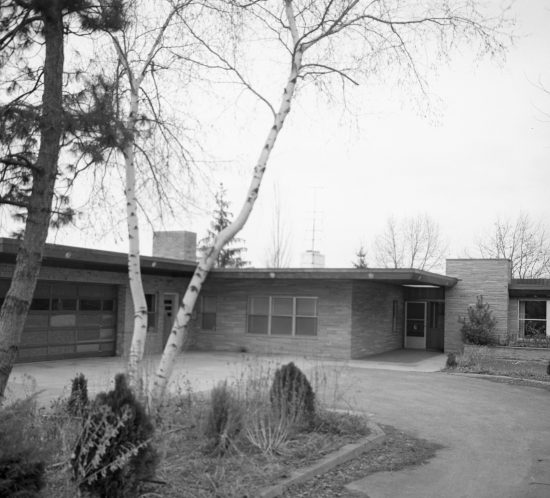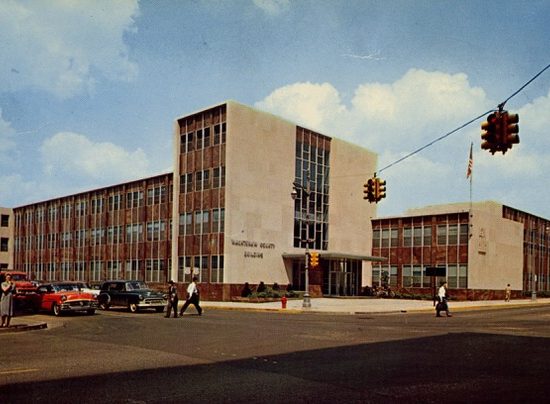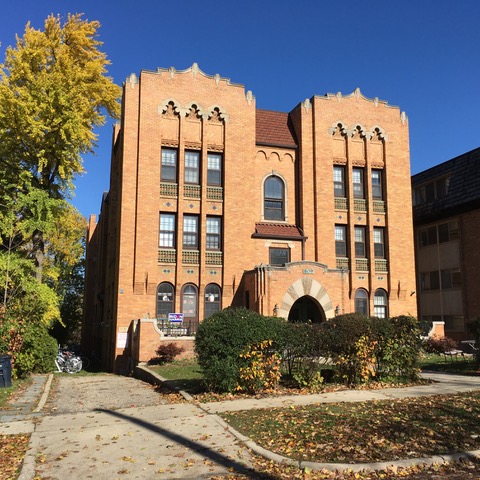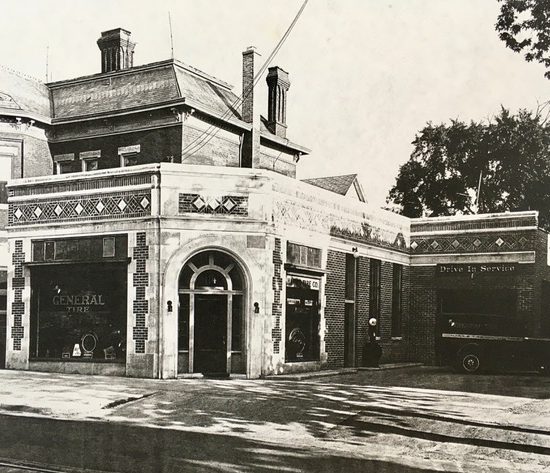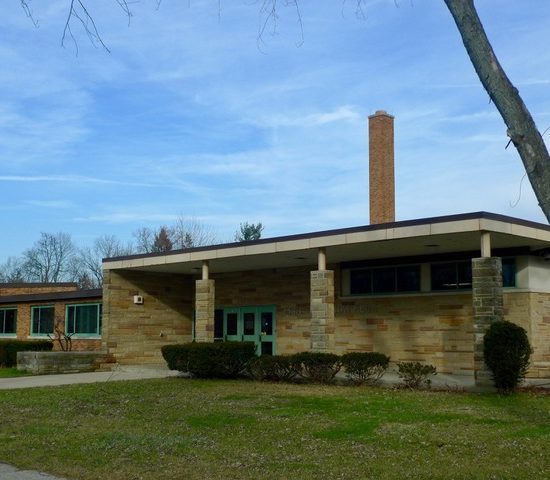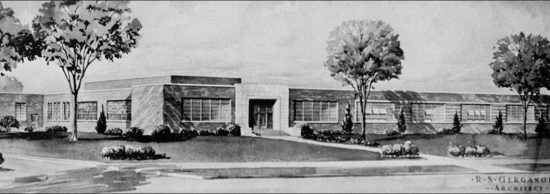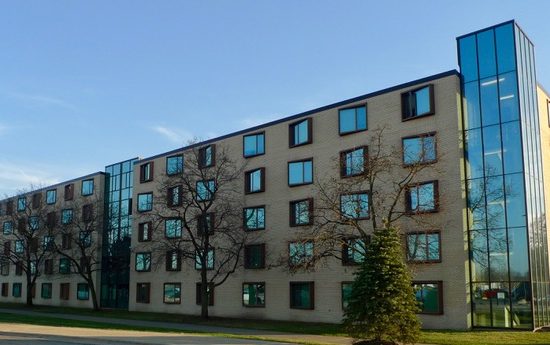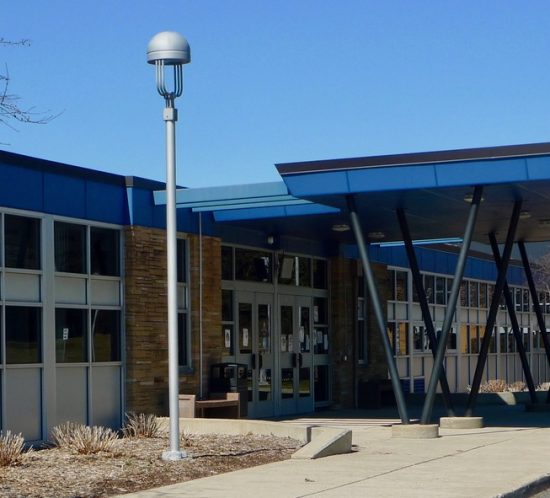Ralph Gerganoff
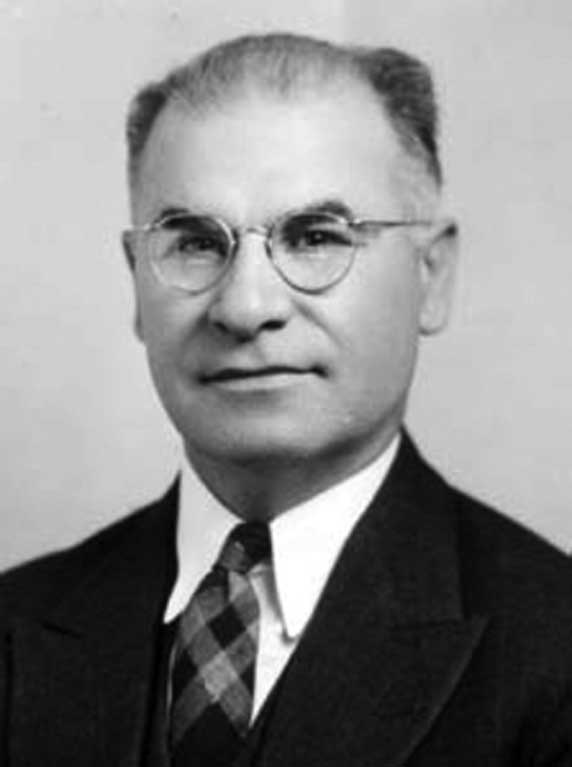
Ralph Stephens Gerganoff (who went by R.S.) designed many of the most prominent institutional buildings in Ann Arbor and Ypsilanti from the 1920s-1960s. From court houses to apartment houses, gas stations to churches, schools to commercial buildings—his buildings dot the landscape and yet most are not associated with him and his name is not a well-recognized one in the pantheon of local architects. This is a shame because his work is solid, aesthetically pleasing, and long lasting. His works are better known in Ypsilanti because he built almost every public school and 12 buildings on the Eastern Michigan University Campus, in addition to many homes. But the corpus of work in Ann Arbor is large enough to fill 12 folders of materials (from a total of 28) housed at the Bentley Historical Library on the University of Michigan campus.
R.S. was born Rashko Stoyan Gerganoff in 1887 in the village of Kereka in the Balkan Mountains of Bulgaria which at that time was still part of the Ottoman Empire. His father was a builder and self-taught architect and trained his son as a cabinet maker, carpenter, and builder. Given the climate of the times, Gerganoff embarked for America in 1905 with the proverbial $5.00 in his pocket. He went to Illinois to stay with a cousin but soon realized he needed to know English and went to Fredonia, New York and took night classes to earn a high school degree. His ambitions led him to the University of Michigan, where he obtained an Architecture degree in 1917. This was years after teaching high school drafting in Wisconsin, cleaning a boarding house to pay for his rent, giving music lessons (after teaching himself the violin, cello and viola) and learning to repair shoes. This was one determined man. After he graduated, he taught vocational ed and engineering at Northwestern University in Evanston, Illinois and then moved to Detroit in 1920. There he took his board exams and became an American citizen four years later at the age of 37. After working at the distinguished firm of Donaldson and Meier for a while, he established his own firm in Ypsilanti in 1927. After World War II, he brought his nephews Zack and Steve from Bulgari and they joined his business after getting architecture degrees from the University of Michigan. Gerganoff was living the American Dream. He died November 25, 1966 after suffering a heart attack at work. He is buried at Highland Cemetery in Ypsilanti. Zack, known also as Z.T., donated Ralph’s papers and drawings to the Bentley Historical Library at the University of Michigan.
The Detroit area was the place to be for an architect in the roaring twenties. The auto companies were operating at full speed and waves of immigrants poured into the state to work at their factories. The economy was humming and a true middle class was emerging. Add to that the unparalleled wealth of the auto magnates and you have a recipe for expensive and beautiful buildings. Today when one tours Detroit, it’s the buildings of this era that stand out today.
This is equally true of buildings in Ann Arbor and Ypsilanti. Most visible in Ann Arbor are the Ypsi-Ann (formerly Wolverine) Building at Washington and Fourth Ave [1926]; the Kingsley-Post apartments at 809 E. Kingsley [1929]; and the Harris Tire Co offices, now the Beer Depot on William St. He also designed St. Nicholas Greek Orthodox church [1935] on North Main, which was demolished recently for condos. His largest and perhaps most visible project was the Washtenaw County Court House [1954] at the corner of Main and Huron, ground zero for house numbering and the original center of the city.
Gerganoff drew up plans for a new courthouse in 1946 but they were rejected by the voters. He drew up new plans in 1954 and these were approved. He made the ingenious decision to build the new courthouse around the old one, so the latter could stay in use during construction. The old courthouse, dating to 1878, was of the wedding cake variety with a clock tower which was lit up at night (and inspired Robert Frost’s poem “On a Winter Evening.”). It had statues holding the scales of justice on all sides and was surrounded by lawn which eventually yielded to parking. It was a sorry mess by 1950 and residents were happy to see it go. Today, there is still regret about the demolition. But the 1954 building is now being recognized as a Mid-Century Modern classic.
In Ypsilanti, the buildings on the campus of EMU and the many public schools stand as testimony to Gerganoff’s skill. At Eastern, he designed six residence halls, the president’s Home [1949], the Frederick Alexander Music Building [1939-demolished], the 1938 Stadium [demolished], the Administration Buildings, the Rackham School for Handicapped Children [1938] and others. He designed around two dozen gas stations in the Ann Arbor- Ypsilanti Area, many of which have been razed. But one of his most important contributions was the building of apartment buildings. In the 1920s, this form of living was becoming more popular for single people who previously rented rooms in boarding houses. He built the Counselor Apartments at Washtenaw and Huron in 1926. He was forced to sell this building during the Depression and used the money to return to Bulgaria and see his father’s projects. When he returned, his firm built the City Printing Building on Cross St., the Rackham School at EMU and the King, Goodison, Brown, Munson, Jones and Goddard residence halls.
After World War II, he brought his nephews Steve (Stoyan) and Zack (Zdravko) over from Bulgaria and they both earned degrees in Architecture at UM. Steve joined his uncle’s practice while Zack had his own, and then entered local politics. Zack eventually took over the business in 1980 and donated all the papers and drawings from the firm to the Bentley Library at the University of Michigan in 1983. The firm was busy with commissions for public schools, especially in Ypsilanti, including the Chappelle School and West Junior High School. The firm also built Beyer Hospital. Less well documented are the homes built by the firm. The ones we know of were built in the popular styles of the day—Colonial, Tudor, and Ranch—including the Colonial at 119 West Cross St and the Tudor at 921 Woods Drive. All are in Ypsilanti.
Peg Porter, whose father worked with R.S. and who published an article about him in Ypsilanti Gleanings (Summer 2009) thinks the finest home was the one he built for himself which is said to show influences of Frank Lloyd Wright. After building the home he surprised everyone by getting married! This home at 1330 N. Huron River Drive is a classic mid-century modern. However, it has recently been a source of concern due to its dilapidated state. It was purchased by someone wishing to restore it and the staff of the Washtenaw County Historic District Commission visited the site in February of 2019 to discuss the possibility of historic designation, which would allow the owner to take advantage of tax credits should the State of Michigan restore them.
Many of Gerganoff’s buildings survive today. Some are in historic districts with some level of protection against demolition. Perhaps as Gerganoff becomes better known, his buildings will be more appreciated and protected.
Partial Bibliography:
“R.S. Gerganoff: An Architect for the 20th Century,” Peg Porter, Ypsilanti Gleanings, Summer 2009
“In Search of R.S. Gerganoff,” Alek A. Jaskovice, Ann Arbor Observer June 2003.
The Gerganoff House: then and Now,” Derek Spinel. Post and Lintel, Spring 2011 [EMU Preservation Newsletter].
“Supervisors See Courthouse Sketches,” Ann Arbor News. February 10, 1953.
“The Proposed Washtenaw County Building,” Ralph S. Gerganoff, Washtenaw Impressions, November 1949 [newsletter of Washtenaw County Historical Society].
Z.T. Gerganoff papers of the R.S. Gerganoff architecture firm. Donated to the Bentley Library, University of Michigan, 1928-1977, 27 outsized folders and 1 linear foot. There is also a handsome book with some the works by the firm.
Buildings

